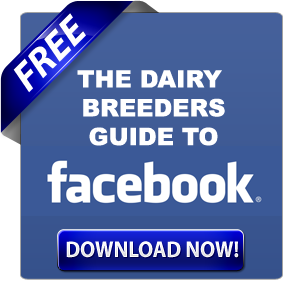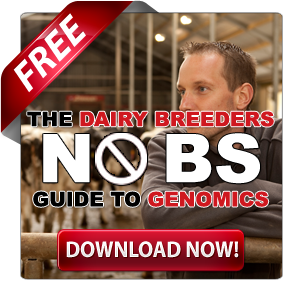Premier Select Sires awarded over $20,000 to students through the 2024 Premier Future Ag Leaders Scholarship Program. Two students received $2,500 scholarships through the Johnny Daniel Memorial Scholarship and the Wayne Dudley Scholarship. Nineteen other students received scholarships of $500 to $1,000 in value. Six students received an Honorable Mention with a $100 cash award and semen gift certificate.
Alex Empet of Kingsley, PA is the son of Richard and Dana Empet. Alex received the Johnny Daniel Memorial Scholarship. Alex is from Empet Farms, a dairy farm with 150 milking cows and a total of 350 head. He is a student at SUNY Cobleskill studying Dairy Production and Management. After college, Alex plans to return to Susquehanna County to continue working on the family farm. He hopes to update the facility and serve as an advocate for animal agriculture in his community.
Paige Peiffer of Lebanon, PA is the daughter of Ammon and Brenda Peiffer. Paige received the Wayne Dudley Scholarship. Paige is from Boxed-In Acres, a dairy farm that milks 80 Holsteins and raises all of their own replacement heifers and calves. She is a student at Penn State University studying Animal Science (Science Option). After college, Paige plans to work in the artificial insemination industry. She also wishes to stay active on her family’s dairy farm.
Lemuel Coltrane of Pleasant Garden, NC is the son of Amy and David Coltrane. Lemuel is from Coltrane Dairy LLC, a dairy farm with 550 milking cows and a total of 1,300 head from heifers to dry cows. He is a student at NC State University studying Agriculture Science. After college, Lemuel plans to return to the family farm. He is excited to bring the skills and knowledge he has gained through his education back to the farm.
Sarah Diehl of McVeytown, PA is the daughter of Joe and Kristin Diehl. Sarah is from Musser Run Jerseys, a 240-cow registered Jersey farm. She is a student at Virginia Tech University studying Dairy Science – Pre-Vet Track. After obtaining her bachelor’s degree, Sarah hopes to attend veterinary school to become a licensed food animal veterinarian. She wishes to treat animals and help farmers discover new ways to improve their overall herd health and profitability.
Julia Heijkoop of Mayo, FL is the daughter of Johan and Trisha Heijkoop. Julia is from Milk A Way and K&H Dairy, where they have 2,000 dairy cows. She is a student at the University of Florida studying Agriculture Operations Management with minors in Management and Sales in Agribusiness, and Agriculture and National Resource Ethics and Policy. After college, Julia aspires to serve as an agricultural lobbyist and to work in agricultural marketing.
Darcy Heltzel of Martinsburg, PA is the daughter of Andrew and Jennifer Heltzel. Darcy is from Piney-Mar Farm, a dairy farm with 150 milking/dry cows and 120 heifers. She is a student at Iowa State University studying Food Science with a minor in Animal Science. After college, Darcy hopes to become a food scientist. Through this role, she will advocate for dairy foods, help farmers by creating new avenues for their milk, and have a complete understanding of food processing from cow to consumer.
Bethany Knutsen of Harrington, DE is the daughter of Stephanie and Gregg Knutsen. Bethany is from G&S Dairy, a dairy farm with 60 milking cows and 120 total head. She is a student at the University of Delaware studying Plant Science. After college, Bethany plans to become a certified agronomist and someday own an independent agronomy business. She wants to help farmers do what is best for their land so they can be profitable and sustainable, achieving higher production with fewer resources.
Katheryn Longenecker of Williamsburg, PA is the daughter of Doug and Yvette Longenecker. Katheryn is from Penn England Farms, LLC, a dairy farm with 2,100 milking cows and 4,000 total head. She is a student at Penn State University studying BioRenewable Systems – ASM Option. After college, Katheryn plans to become an agricultural engineer or acquire a job in product validation or field testing equipment under an agriculture equipment company. With precision agriculture gaining popularity and importance in the industry, she desires to play a part in the impact technology will make in the future.
Victoria Longenecker of Williamsburg, PA is the daughter of Doug and Yvette Longenecker. Victoria is from Penn England Farms, LLC, a dairy farm with 2,100 milking cows and 4,000 total head. She is a student at Penn State University studying Biological Engineering. After college, Victoria plans to work for the Natural Resources Conservation Service as an Agricultural and Environmental Engineer. She looks forward to helping take pressure off of farms in meeting regulations, while helping the agriculture industry have a positive impact on the environment.
Constance Maxwell of Shady Dale, GA is the daughter of Cuyler and Christy Johnson. Constance is from Godfrey Dairy Farm, a Holstein farm milking 1,000 cows. She is a student at Illinois College studying Agriculture Business. After college, Constance hopes to join the workforce in the agriculture industry. She wants to become a bridge between dairy producers, consumers, and agricultural companies, fostering positive communication and understanding.
Lydia Brown of Mill Creek, PA is the daughter of Scott and Emily Brown. Lydia is from Valley Meadow Farm, an Angus operation with 40 head of cattle. She is a student at Penn State University studying Animal Science. After college, Lydia hopes to attend veterinary school and pursue a career in animal medicine. She also plans to continue raising beef cattle on her family’s farm.
Joseph Coltrane of Pleasant Garden, NC is the son of David and Amy Coltrane. Joseph is from Coltrane Dairy LLC, a dairy farm with 550 milking cows and a total of 1,300 head from heifers to dry cows. He is a student at NC State University studying Agricultural Science. After college, Joseph plans to return to the family farm. He hopes to use his education to learn new techniques and technologies, broaden his knowledge of agriculture, and build relationships with people in the agricultural field so he can help the farm produce quality products, ensure animal comfort and care, and run an efficient, healthy dairy farm.
Katelyn Heckman of Kutztown, PA is the daughter of Tracie and Chris Heckman. Katelyn is from TBM Farm, a Holstein operation with 170 milking cows and 300 total head. In college, she plans to study Animal Science / Pre-Vet Medicine. After college, Katelyn plans to attend vet school and become a large animal veterinarian. She also wishes to study embryology and breeding and learn to help others maximize herd potential on dairy farms. She plans to continue helping on her family’s farm as well.
Salem Sifford of Goldvein, VA is the daughter of Stephen and Rosemary Sifford. Salem is from Roseview Cattle Farm and Plessed-Rose Dairy, where she and her family own 50 head of dairy and beef cattle. She is a student at Virginia Tech University studying Dairy Science. After college, Salem hopes to find a career working in livestock extension so she can work hands-on with producers, be involved in advocating for agriculture, and work with future generations of agriculturists. She also plans to continue to operate her own herd of beef and dairy cattle.
Jordan Anderson of Centre Hall, PA is the daughter of Donald and Angela Anderson. Jordan is from Locust Rock Farm / Cabaret Cattle Company where she and her family raise Holsteins and Jerseys. She is a student at University of Wyoming studying Agriculture Communications. After college, Jordan hopes to pursue a career in agriculture communications and work in a capacity that allows her to be an advocate for the dairy industry. Whether this is in the marketing department of a company or working in education for a nonprofit, her hope is to bridge the gap between producers and consumers.
Rachel Craun of Mt. Crawford, VA is the daughter of Kevin and Patti Craun. Rachel is from Van Ike Farm, where she owns about 20 head of Holsteins of her own. She is a student at Purdue University studying Agricultural and Biological Engineering. After college, Rachel plans to pursue a career in agricultural engineering. She hopes to work for a private engineering firm focusing on ag-related projects, or for the Natural Resource Conservation Service. She has interest in new technologies and how they can be used to be proactive in staying ahead of environmental regulations that impact agriculture.
Isaac Folts of North Collins, NY is the son of Josh and Virginia Folts. Isaac is from Folts Farms LLC, where they milk 120 cows with two Lely robots. They also have a show barn housing 45 show animals. He will attend Cornell University to study Animal Science. After college, Isaac plans to take over the family business. He hopes to use the lessons learned from his education to adapt the farm and maximize potential.
Karl Graulich of Cobleskill, NY is the son of David and Suzanne Graulich. Karl is from Argus Acres LLC, where they milk 500 registered Holsteins. He is a student at Iowa State University studying Agronomy. After college, Karl plans to return to his family’s farm and help expand it alongside his older brother and father. His role will be that of crop manager.
Ainsley Sellers of Lebanon, PA is the daughter of Kraig and Meranda Sellers. Ainsley is from Gem-Rock Holsteins, where they milk 60 cows. She will attend Penn State University to study Animal Science. After college, Ainsley aspires to be a dairy robotics technician that installs and maintains robots on dairy farms. She enjoys working with both farmers and animals, and she feels this career will help her enhance the lives of both.
Timothy VanLieshout of Verona, NY is the son of Stephen and Cynthia VanLieshout. Timothy’s family operates a dairy farm milking 1,100 Holsteins, with 2,200 total head. He is a student at SUNY Morrisville studying Animal Science – Dairy. After college, Timothy plans to return to the family farm. He hopes to then earn a management/owner’s position.
Natalie Yoder of Belleville, PA is the daughter of Michael and Maria Yoder. Natalie is from Dryhouse Farm, a Registered Holstein farm with 200 milking cows and 450 total head. She is a student at Penn State University studying Agribusiness Management with a minor in International Agriculture. After college, Natalie plans to enter the agriculture field in the area of sales, marketing, or management. She is interested in jobs that promote agriculture to the consumer as well as positions that provide support to the agriculture community.
Honorable Mentions for the scholarship program include:
- Nicole Arrowsmith of Peach Bottom, PA
- Macy Chapman of Taylorsville, NC
- Alleigh Johnson of Statesville, NC
- Zachary Johnson of Tunbridge, VT
- Luke Larson of Okeechobee, FL
- Amber MacNeil of Hoosick Falls, NY
The Premier Future Ag Leaders Scholarship Program provides financial support to eligible students pursuing agricultural education, and it also provides additional return to the cooperative’s member-owners by supporting the next generation of young people desiring to study and work in the agriculture industry. The Premier Select Sires board of directors has made a commitment to providing money to support this scholarship program on an ongoing annual basis.





 “Ethan’s background, education and on-farm work have prepared him well for this role. He combines science-based principles with practical experiences to make tactical decisions,” said Jeff Ziegler, vice president of dairy cattle breeding, Select Sires Inc. “We’re excited to watch Ethan grow in this role and deliver tremendous benefits to farmers around the world.”
“Ethan’s background, education and on-farm work have prepared him well for this role. He combines science-based principles with practical experiences to make tactical decisions,” said Jeff Ziegler, vice president of dairy cattle breeding, Select Sires Inc. “We’re excited to watch Ethan grow in this role and deliver tremendous benefits to farmers around the world.”
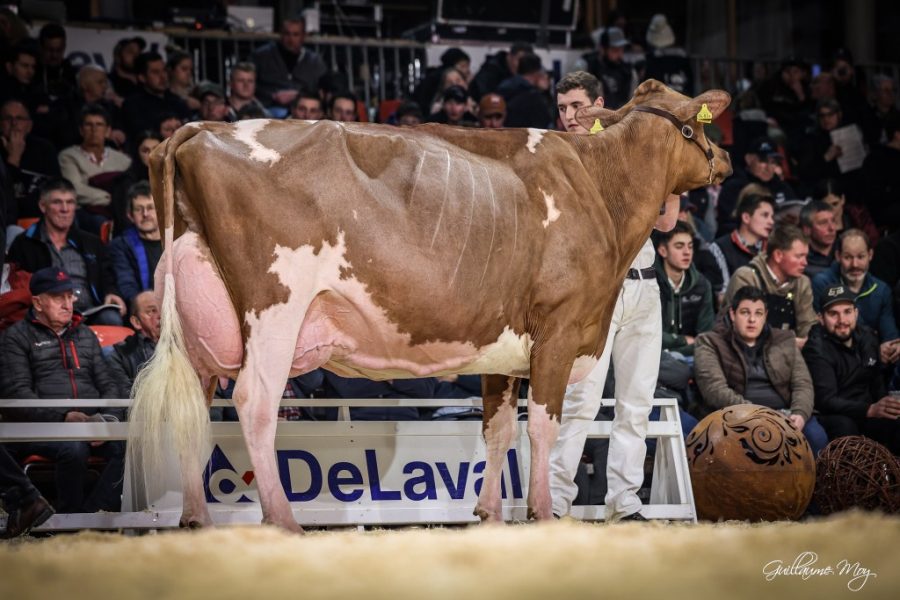
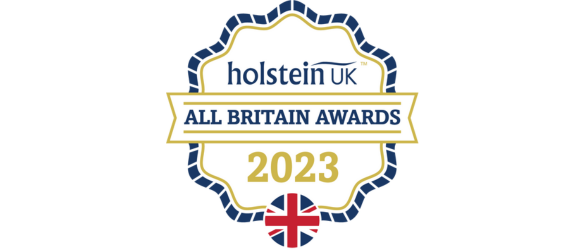 During the annual All Britain Dinner following the UK Dairy Expo, the highly anticipated winners were announced. A total of fifteen classes were judged based on the quality of animals displayed in show rings throughout shows in the UK in 2023. The awards bring together animals from across the UK, allowing them to compete head-to-head.
During the annual All Britain Dinner following the UK Dairy Expo, the highly anticipated winners were announced. A total of fifteen classes were judged based on the quality of animals displayed in show rings throughout shows in the UK in 2023. The awards bring together animals from across the UK, allowing them to compete head-to-head. Dairy Producers of the Year
Dairy Producers of the Year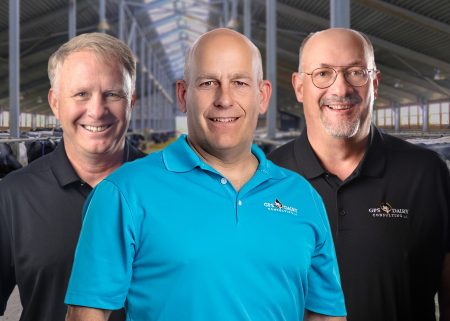 Industry People of the Year
Industry People of the Year International Person of the Year
International Person of the Year

 Abby Foss has joined the Select Sires communications team in a part-time internship role. Upon her graduation from the University of Minnesota – Twin Cities in May with degrees in animal science and agricultural communications and marketing, Foss will join the team in a fulltime capacity.
Abby Foss has joined the Select Sires communications team in a part-time internship role. Upon her graduation from the University of Minnesota – Twin Cities in May with degrees in animal science and agricultural communications and marketing, Foss will join the team in a fulltime capacity.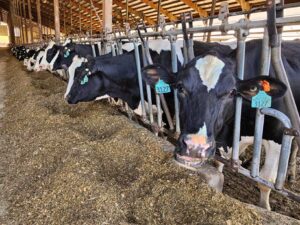 Fiber in the diet provides an important role in rumen function and digestive health. The varying levels of digestibility of fiber are due, in part, to differences in the amount of lignin, the part of the plant cell wall that provides the plant rigidity. Fiber is important for microbial fermentation, which in turn supplies energy to the cow. The primary products of the microbial fermentation of fiber are precursors of fat in milk.
Fiber in the diet provides an important role in rumen function and digestive health. The varying levels of digestibility of fiber are due, in part, to differences in the amount of lignin, the part of the plant cell wall that provides the plant rigidity. Fiber is important for microbial fermentation, which in turn supplies energy to the cow. The primary products of the microbial fermentation of fiber are precursors of fat in milk. The Wisconsin Holstein Association announced the judges for the Wisconsin Summer Championship Show.
The Wisconsin Holstein Association announced the judges for the Wisconsin Summer Championship Show.

